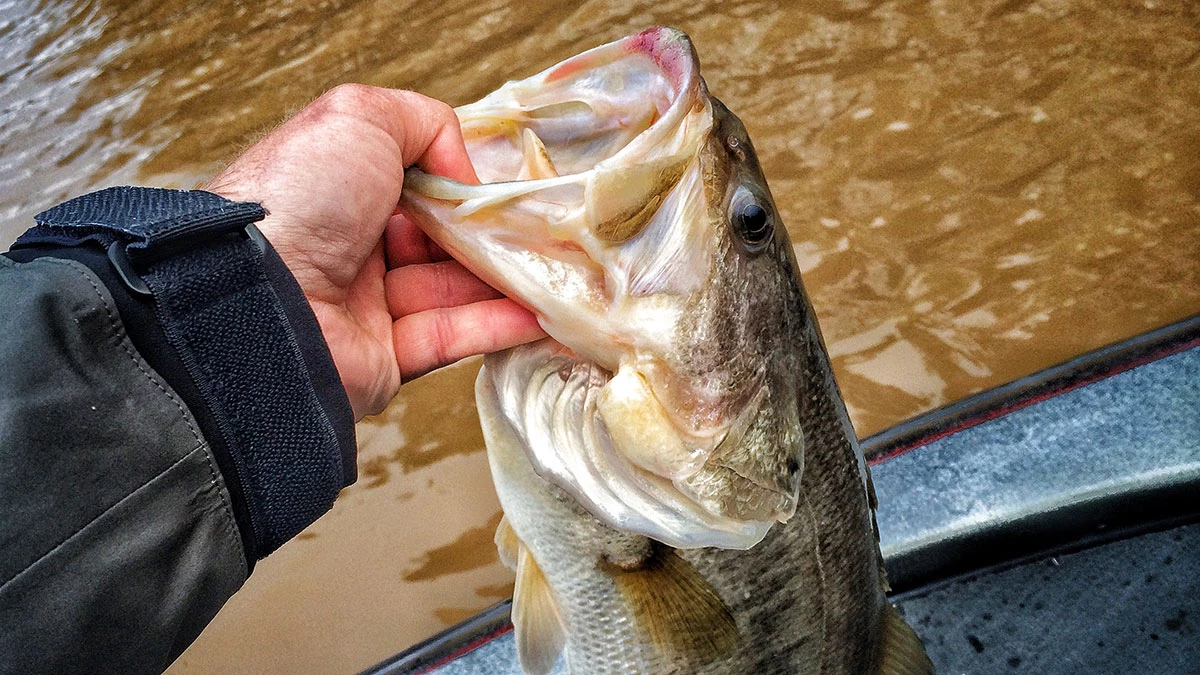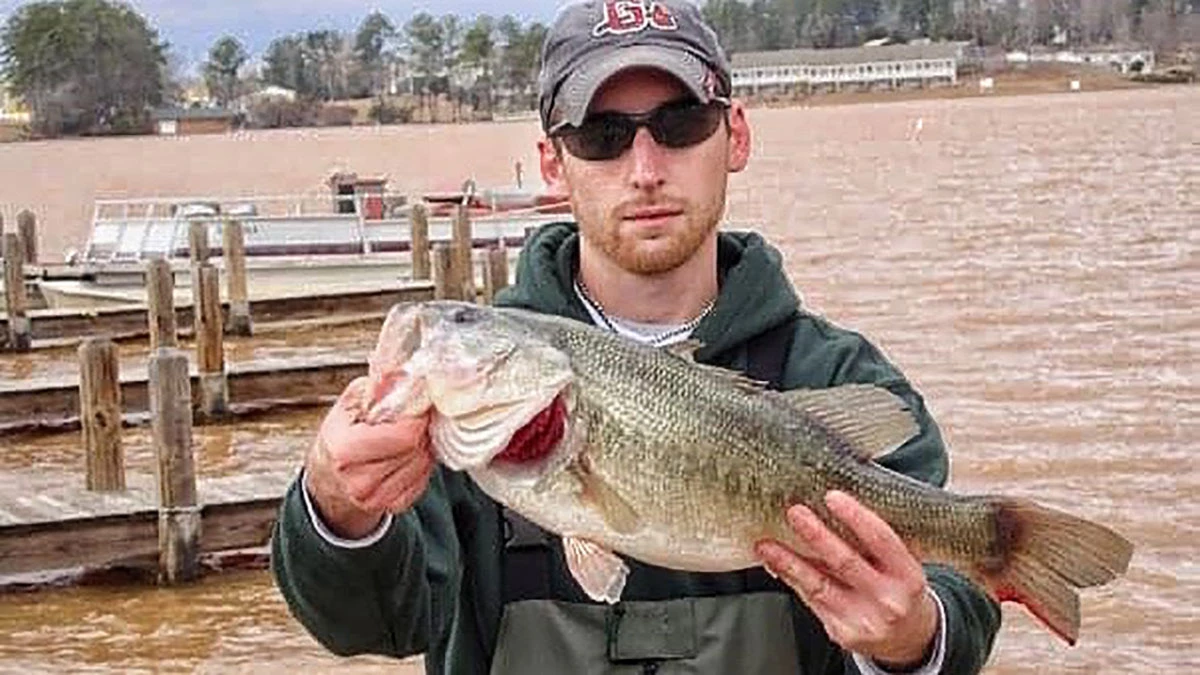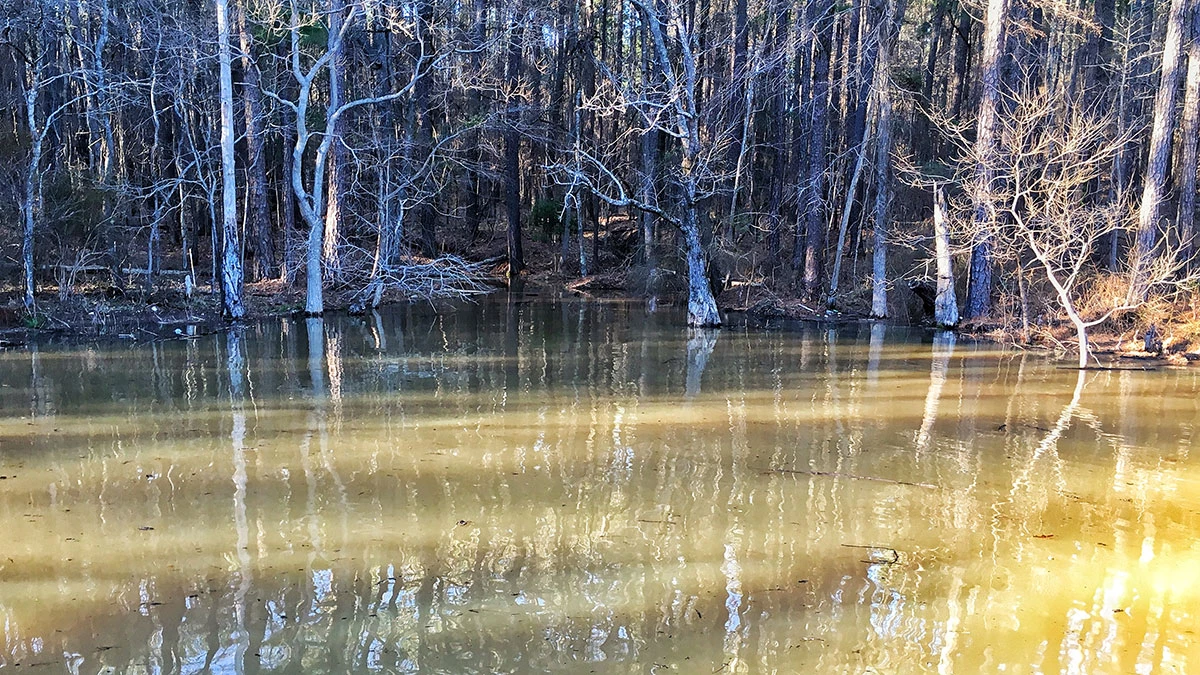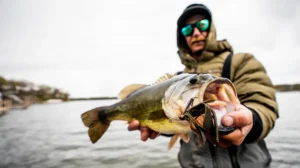This article is going to be a little less formal than most I publish. I’m going to talk to you like you and I are hanging out at the boat ramp, leaning over the gunnel of my boat, nursing sunburns after a long day of fishing and sharing stories and theories about all kinds of bass fishing topics.
I want to tell you about an annual occurrence that I hardly speak about to folks outside of my tight circle. I’m at that stage in my writing career where I don’t really like to keep secrets anymore because I’d rather watch other folks catch a bunch of fish. So again, this article is going to be a lot more conversational than some of my others but heck, let’s just roll with it and see where it takes us. Hang with me for a few minutes and I’ll bet you’ll be fired up to hit the water as soon as humanly possible.
Here is the bottom line: If your water temperatures are in the mid 40-degree range right now, some of the biggest fish in the lake are on the banks. As you’re reading this sentence, there are absolutely giant bass hanging out in just a few feet of water. And while they’re in this shallow water right now, they’re some of the dumbest animals on the planet. When I say “dumb”, I’m pronouncing it with a capital “B”. They’re dumb.
Like… real dumb.
Thesse shallow bass are just about as dull as a first grader’s Crayon right now and they’ll eat anything half-believable you sling in front of them. So as I dump my thoughts out, understand that I’m not a biologist. I don’t claim to be. I don’t swim with the fish and I don’t talk to ‘em. But I’ve seen enough of this behavior throughout my life that this month and the next month are one of my absolute favorite times of the year to target big bass.
Humanizing the behavior of a big bass
Yes, I know the picture sucks. But hang with me. There’s a reason I used it.
The day this theory clicked for me will never leave my head. I was fishing a tournament about 15 years ago on my home lake. To be totally honest, the conditions and the fishing were terrible all day long. The air temperature was in the low 40s, the wind was blowing about 20mph and the sun was nowhere to be found. As you can tell from the above photo, I was all skin and bones and I didn’t have anywhere near the “natural” insulation that I do now (some may call it “fat”, but I digress). It was freakin’ miserable out there for my scrawny little butt.
In an effort to get out of the persistent wind, I decided to make a short run across the lake and duck into a little creek to warm up a little bit. It was around lunchtime and I didn’t have anything in my livewell, so I was essentially just wasting time until weigh-in. As I got about halfway in to the pocket, however, I noticed a few white spots around the back corners of each boat docks. There was no way they were beds, right?
I slid my cheap, polarized gas-station sunglasses onto my face and as sure as the day is long, there were shadows (bass) all over those white spots. Those were dang bass beds and there were bass actively occupying them. It was the first week of January and as I mentioned earlier, absolutely miserable conditions.
To make a long story short, I flipped up a dang good limit of bass in about 20 minutes and won the tournament. The photo you see above is my biggest of the day. I know it’s a poor-quality photo but I felt the need to include it in this piece.
Zoom in and look at her tail: There was blood dripping all over my boat carpet because she was actively making a bed 3 months earlier than most folks around here think that behavior actually happens. So were the other four bass I weighed that day.
That day clued me into this behavior and I was able to replicate that success for the next decade or so. I’m not saying that it was like clockwork, but I always felt like I had a chance of catching a giant shallow-water bass in January and February. I might not always catch a limit or win a tournament but by gosh, I’d have a legitimate shot at a 6-pounder every time I put my boat in the water.
I’m a simple dude with a simple mind, so of course, I make a concerted effort to simplify most things in my mind. I’m not a biologist, I don’t pretend to be one and to be quite honest, I don’t want to be one. I’m simply going from my personal experience and success.
I think the biggest bass in the lake move shallow first—much sooner than most folks think. When the water temperatures creep up to the upper 40s, you better be thinking about fishing some shallow water. These big females, in my opinion, move up first because there is less competition for suitable spawning grounds. This early move gives them the proverbial pick of the litter and allows them to find what they consider to be the best spot for their individual needs.
I don’t think they necessarily spawn when they make this move. I’ve always called it “shopping for real estate”. They’re browsing their potential bedding areas and not to mention, they’ve been hanging out in deep water for a few months and not eating much. So they’re hungry as a hippo and they’re ready to eat anything that comes past their noses. These big females instinctually know when their spawning window is approaching and it’s tough on their bodies. So they’re very apt to chase big and fast-moving baits right now to fill up before the mayhem commences. It’s just like if the two of us went shopping for a new piece of land and stopped to grab a cheeseburger while we’re out.
Old mud is good mud
I make an absolute point to look for muddy water this time of year. Muddy water has a higher density than clear water which allows it to conduct and hold heat more efficiently in cold-water conditions. Clear-water areas of your local lake might be 45 degrees but if you can find some of that mud, you might be fishing in 48-degree water. The 3-degree difference may seem menial to some but I’m telling you, just a one-degree increase can make a world of difference.
It’s important to understand, however, that there is a big difference between old mud and new mud. If you’re targeting the shallows immediately following a few days of rain, you’re most likely going to struggle. For whatever reason, big bass tend to shy away from fresh runoff; it’s almost like they need a few days to get over the change in their environment. My favorite situation is when muddy runoff is introduced into a pocket or creek about three days before I fish it. I believe it gives the bass an opportunity to acclimate to their new surroundings and set up closer to hard cover in order to use it as ambush points.
When I’m looking for big, early prespawn muddy-water bass this time of year, I like to cover a bunch fo water in a hurry. As I mentioned earlier in this article, don’t expect ‘em to be laid all over the bank. I guess it can happen on rare occasions, but it’s certainly the exception and not the rule. So in order to maximize my efficiency and capitalize on their sheer aggressiveness right now, I use fast-moving baits. Yes, you’re not going to hear that in many bass-fishing magazines; it goes against conventional wisdom. But this fast-moving technique may not result in quantity, but it will certainly allow you to quickly identify and locate the most aggressive, shallow-water fish in your system.
Soft-plastic toads (yes, I know it seems cold for them, but trust me on this when it’s in the upper 40s), ChatterBaits, swim jigs and black buzzbaits have proven to be enormous producers for me in these conditions.
Don’t let this crazy weather put worms in your brain. Let the lake get a little muddy for a few days and go chuck-and-wind reaction baits in a few feet of water. As I mentioned, you’re probably not going to catch a pile of fish but I’m willing to bet a few bucks that you’ll catch your biggest bass of the year. I’m telling you, it’s something you need to try ASAP.














